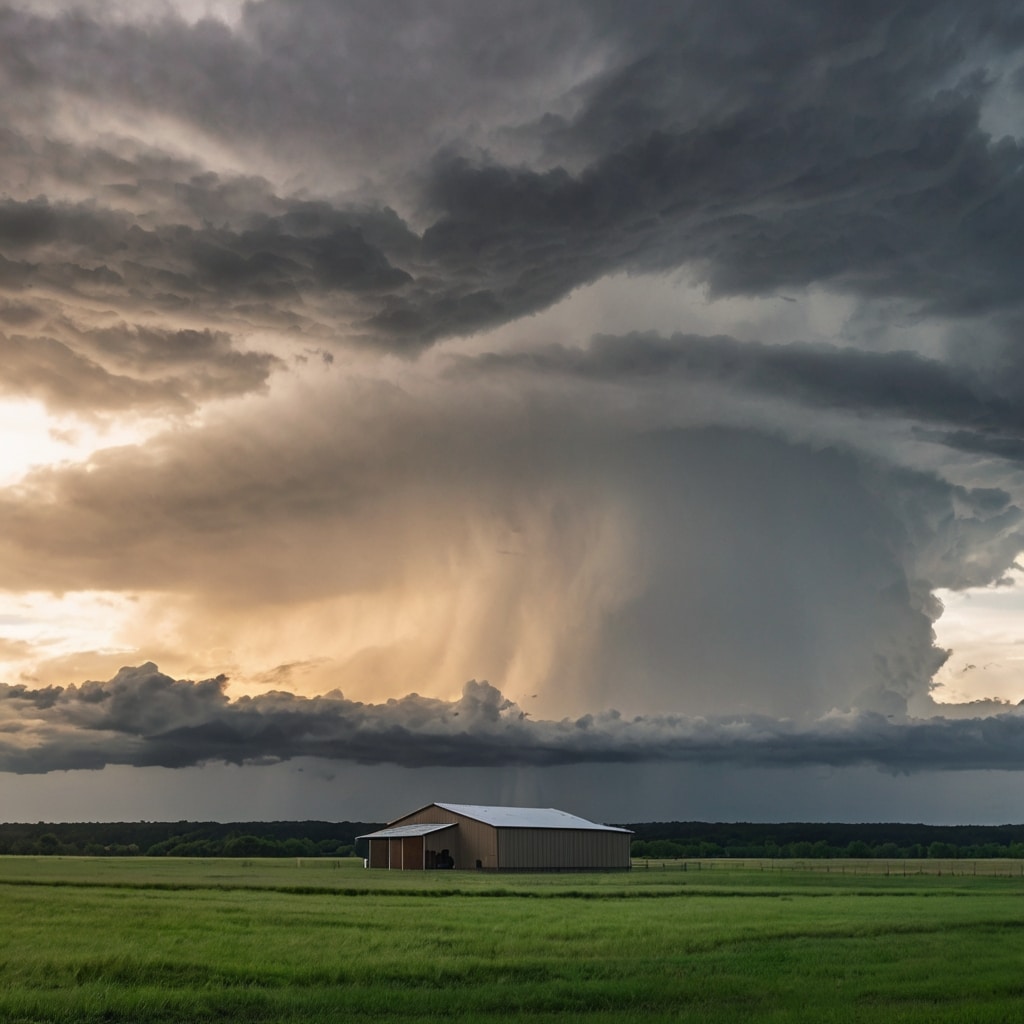
Are barndominiums safe in severe weather? If you’re considering building or buying a barndominium, this is likely one of your biggest concerns—and for good reason. With hurricanes, tornadoes, floods, and other extreme weather events becoming more frequent across the U.S., the demand for storm-resistant housing is growing rapidly. Thankfully, barndominiums are known for their durability and performance in tough conditions.
Built with steel frames and metal exteriors, barndominiums offer strength, safety, and customization that make them ideal for storm-prone regions. This guide from Barndo Gallery explores everything you need to know—from their ability to resist high winds and heavy rain, to how they compare to traditional homes in post-storm recovery.
Learn how Barndo Gallery helps homeowners build weather-smart barndominiums to learn how we help build stronger, safer homes.
Table of Contents
Understanding Barndominiums and Severe Weather
What is a Barndominium? Exploring Structure & Materials
To answer the question, are barndominiums safe in severe weather, you first need to understand what makes these homes different. A barndominium is a metal-structured home, typically built with galvanized steel frames and metal siding, making them far more resilient than traditional wood-framed houses.
Their weather-resistance comes from key design elements:
| Component | Material Used | Weather Resistance Benefit |
|---|---|---|
| Framing | Galvanized Steel | High wind and impact resistance |
| Exterior Walls | Corrugated Metal | Fire-, moisture-, and storm-proof |
| Roofing | Ribbed Steel | Wind uplift and hail protection |
| Foundation | Reinforced Concrete | Withstands shifting and floods |
These features combine to create a home structure that holds up well under extreme conditions. Unlike wood, steel won’t rot, warp, or host mold in high humidity, making it ideal for areas with unpredictable weather.
Why Safety in Severe Weather Matters for Homeowners
In today’s climate, it’s not a question of if a severe storm will hit—it’s when. So, are barndominiums safe in severe weather scenarios like hurricanes and tornadoes? Absolutely—when built correctly. Their structural steel core resists wind forces, while their simplified design helps minimize areas that are vulnerable to damage.
As storms grow stronger each year, homeowners are investing more in building structures that last. Barndominiums are part of that movement. With customizable storm features like safe rooms, reinforced doorways, and elevated concrete slabs, these homes can be tailored to your location’s unique weather risks.
Want affordable ways to weather-proof your barndominium? Discover great ideas like 25 Small Barndominium Ideas on a Budget to combine safety with style.
Roof and Siding Behavior During Heavy Rain and Windstorms
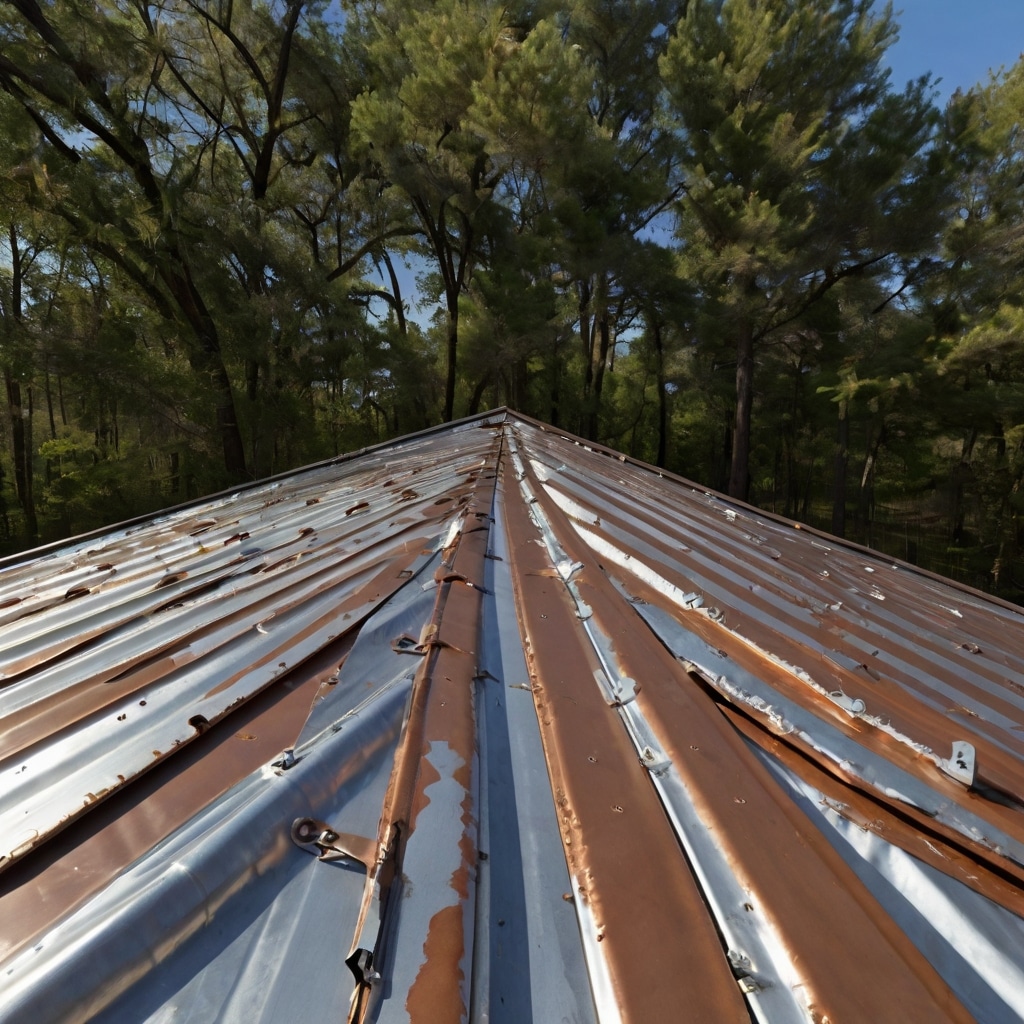
Beyond structural strength, you should ask: are barndominiums safe in severe weather involving rain, hail, or flying debris? One of the top advantages of metal-clad buildings is their resilience to water and impact. Steel siding and roofing are not only corrosion-resistant but also engineered with fasteners and gaskets that prevent water intrusion, even under pressure.
During a thunderstorm with heavy rain and gusty winds, a barndominium’s roof system performs far better than traditional shingles. Metal panels overlap tightly, locking out rain and resisting uplift. When combined with wind-rated anchors and hurricane straps, they create a shell that remains intact in some of the most brutal weather.
Here’s why homeowners increasingly choose barndos:
- Metal roofs repel water and withstand hail
- Steel siding doesn’t crack or peel
- Seamless panel systems reduce leaks
- Overhangs and gutters manage runoff effectively
Storm after storm, the question persists—are barndominiums safe in severe weather events like intense downpours or gusts? Based on performance data and real-world results, barndominiums remain among the safest housing choices.
Discover 8 stunning farmhouse designs that blend elegance with budget to see how metal roofing blends protection with curb appeal.
Whether you live in tornado alley or the stormy South, barndominiums offer peace of mind thanks to their ability to resist structural damage, leaks, and exterior failures. So next time you wonder, are barndominiums safe in severe weather, remember: the design is in their DNA.
Are Barndominiums Safe in Tornado-Prone Areas?
Wind Ratings and Structural Integrity in Tornado Zones
Tornadoes are among the most violent weather events, capable of ripping traditional homes apart in seconds. So, are barndominiums safe in severe weather such as tornadoes? When built properly, the answer is yes—and here’s why.
Most barndominiums are constructed with heavy-duty steel frames, reinforced roof systems, and anchored foundations. These features are critical when dealing with tornado-prone areas like the Midwest or the South. Steel buildings can be engineered to meet or exceed wind ratings of 150–170 mph, depending on the local building codes and storm classification.
In fact, barndominiums can offer better structural performance than standard wood-frame homes in EF0 to EF3 tornado zones. While no home is completely tornado-proof, the compact and sturdy design of a barndo improves its chances of survival in high-wind scenarios.
Let’s compare wind resilience:
| Tornado Classification | Wind Speed | Steel Barndominium Resistance |
|---|---|---|
| EF0–EF1 | 65–110 mph | Fully resistant |
| EF2–EF3 | 111–165 mph | Highly resistant with bracing |
| EF4–EF5 | 166–200+ mph | Partial resistance; storm shelter recommended |
So if you’re asking again, are barndominiums safe in severe weather like tornadoes, the reality is that they are far better equipped than most conventional homes when reinforced and anchored appropriately.
Recommended Safety Additions: Anchoring, Wind Bracing & Storm Shelters
To maximize protection in tornado regions, homeowners should take additional steps when building a barndominium. A solid steel frame alone is strong—but paired with engineered reinforcements, the safety levels increase exponentially.
Here are the top storm-resistant upgrades:
- Concrete Anchored Foundation: Prevents wind uplift and lateral shifting
- Cross-Bracing for Walls and Roof: Maintains structural rigidity under pressure
- Impact-Rated Windows & Doors: Resist flying debris
- Reinforced Safe Room or Storm Shelter: Provides a designated survival space during EF4 or EF5 events
Adding a FEMA-compliant safe room inside your barndominium is one of the most valuable investments you can make. These shelters are designed to withstand catastrophic wind forces and keep your family protected when evacuation isn’t an option.
And if you’re wondering, are barndominiums safe in severe weather without these extras? They’re still safer than most stick-built homes—but combining core strength with storm-proof additions dramatically boosts survivability and peace of mind.
Remember: local code compliance matters. Building your barndominium to meet or exceed wind zone standards in your region ensures you’re not just safe—you’re prepared.
Hurricane Resistance in Barndominiums
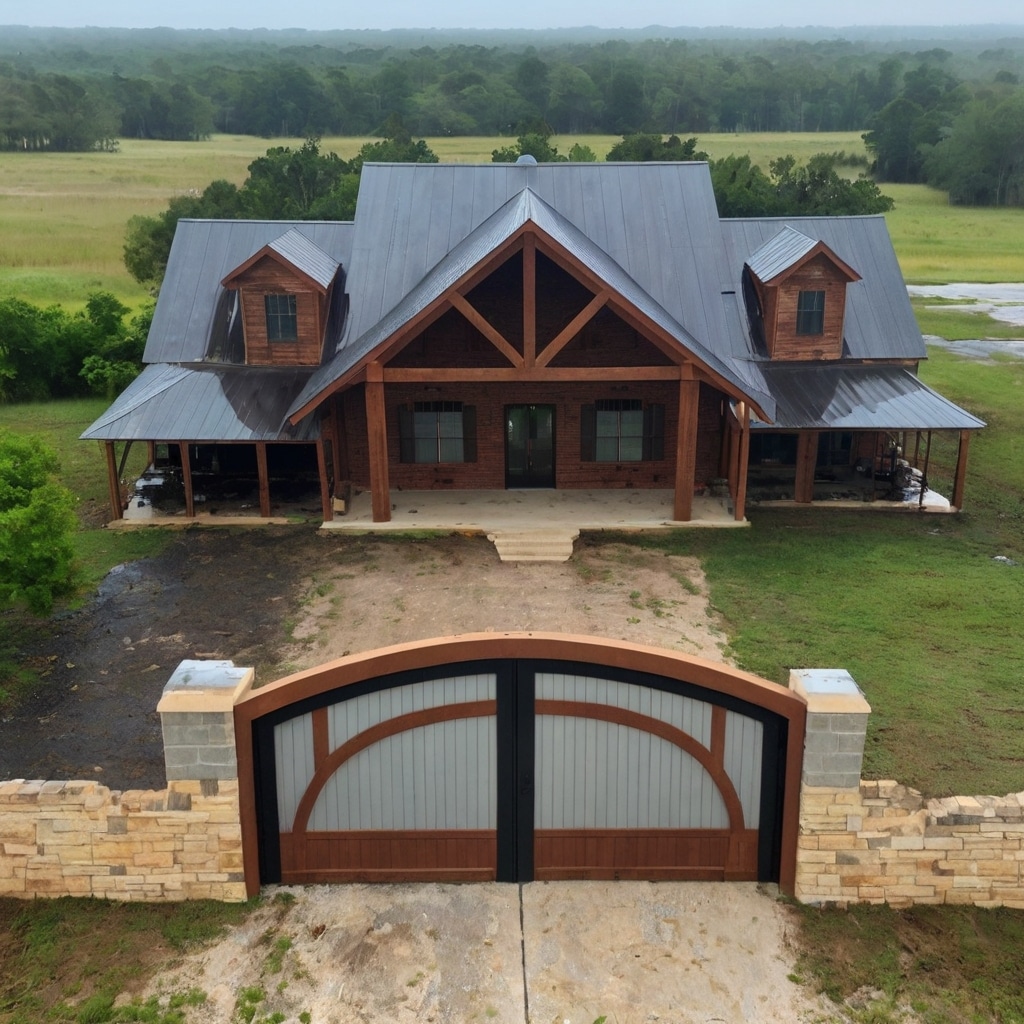
Wind Uplift Protection with Metal Roof Systems
If you live near the Gulf Coast or Eastern Seaboard, hurricanes are an annual concern. So naturally, one might ask, are barndominiums safe in severe weather events like hurricanes? With the right design features, barndominiums stand among the strongest housing types for hurricane-prone areas.
The first line of defense is the roof system. In hurricane zones, wind uplift is a top concern. Fortunately, most barndominiums are constructed with ribbed metal roofing, which has interlocking panels and heavy-duty fasteners that keep it firmly attached to the structure—even during Category 4 storms.
Here’s how barndominium roofing holds up against high winds:
| Feature | Traditional Roof (Shingles) | Metal Roof (Barndominium) |
|---|---|---|
| Wind Uplift Resistance | Moderate (90–110 mph) | High (150+ mph with anchors) |
| Debris Impact Resistance | Poor | Excellent with metal shielding |
| Lifespan After Storm Exposure | Often Requires Full Repair | Often Minimal Maintenance |
These roofs are rated by engineers to handle sustained wind speeds over 150 mph when paired with hurricane straps, ridge caps, and reinforced eaves. So if you’re still wondering, are barndominiums safe in severe weather like hurricanes, the data speaks for itself.
Building Features That Combat Flying Debris and Flooding
Beyond wind uplift, hurricanes also bring storm surges, flying debris, and torrential rain. This is where barndominiums shine, especially with some smart customizations.
To resist debris and flooding, builders often recommend:
- Steel-framed windows with hurricane shutters or impact glass
- Elevated foundations (especially in coastal flood zones)
- Drainage grading around the building perimeter
- Anchor bolts and hurricane clips for extra connection security
Metal siding also plays a big role. Unlike vinyl or wood, steel siding won’t shatter or splinter. It absorbs impacts and sheds water fast—limiting mold and structural rot. So again, if you’re thinking, are barndominiums safe in severe weather conditions like storm surges or horizontal rain, the answer is a confident yes—when built with the right specs.
Learn how Barndo Gallery helps homeowners build weather-smart barndominiums to see how we help homeowners storm-proof their homes from the ground up.
When properly designed, barndominiums offer powerful hurricane protection—often outperforming traditional housing in both cost and resilience.
Flood and Hail Resistance Explained
How Metal Exteriors Protect Against Hail Damage
When people ask, are barndominiums safe in severe weather, hail is often overlooked—but it can be just as damaging as high winds. Baseball-sized hail can destroy asphalt shingles, crack windows, and even punch holes in vinyl siding. That’s where barndominiums shine. Their steel siding and metal roofing are built to resist high-impact projectiles—like hailstones hurled at 100+ mph.
Many barndominium owners choose 26–29 gauge steel for their roofs and walls. This gauge of metal can absorb hail impacts without puncturing or deforming the building’s envelope. In contrast, conventional homes often require complete roof replacement after a major hailstorm.
Why metal wins against hail:
| Material Type | Hail Resistance | Typical Repair Cost Post-Storm |
|---|---|---|
| Asphalt Shingles | Poor – Easily Cracked | High – Full Roof Replacement |
| Vinyl Siding | Weak – Brittle | High – Visible Damage |
| Steel Panels (Barndo) | Strong – Impact-Rated | Low – Spot Repairs Only |
So, if you’re still questioning, are barndominiums safe in severe weather that includes hail, rest assured: their durable outer shell is designed to absorb and deflect, not crack and crumble.
Elevation Design Options for Flood-Prone Areas
Floods cause billions of dollars in property damage each year—and most of it hits homes with poor elevation or drainage. But barndominiums can be engineered specifically to resist flood damage, which puts them far ahead of standard residential construction.
Many barndo builders install raised concrete slabs or use pier-and-beam foundations, especially in coastal or low-lying areas. These prevent floodwaters from entering the living space and reduce the risk of foundation shifting or erosion.
Flood-protection upgrades for barndominiums include:
- Elevated Floor Heights: Raising the home 3–6 feet above flood plain
- Flood Vents: Allows water to pass through the foundation without pressure buildup
- Slope Grading & Gutters: Redirects water away from the structure
- Waterproof Seals & Insulation: Keeps moisture out during storm surges
So again, are barndominiums safe in severe weather that involves flooding? Yes—especially when customized for site-specific risks. Elevation, smart drainage, and steel components make barndominiums highly flood-resilient when compared to most wood-frame houses.
Even better, many of these upgrades are affordable—especially when factored into the initial design. Discover great ideas like 25 Small Barndominium Ideas on a Budget to implement smart flood solutions without overspending.
Customizing a Barndominium for Maximum Weather Resistance
Popular Reinforcements for Harsh Climate Zones
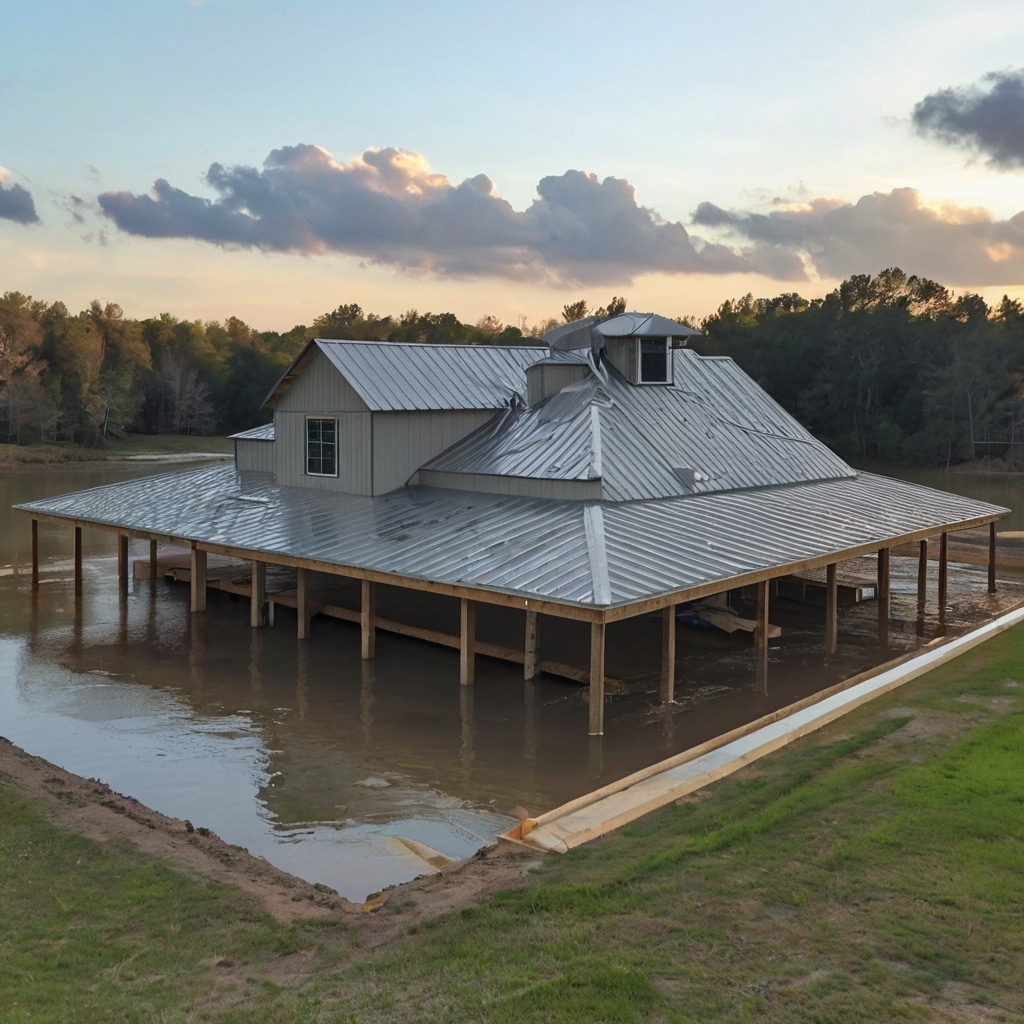
One of the biggest advantages of barndominiums is flexibility. Whether you’re building in a hurricane zone, floodplain, or tornado alley, you can tailor your barndominium to handle nearly any challenge nature throws your way. So when asking, are barndominiums safe in severe weather, remember — a big part of the answer lies in how you design it.
Here are some of the most effective customizations:
- Hurricane Straps & Roof Braces: These metal reinforcements hold roof trusses to the frame, preventing uplift during high winds.
- Impact-Rated Windows: Special glass resists shattering during storms or hail events.
- Thicker Steel Panels: Higher gauge siding offers added protection against wind-driven debris.
- Fire-Resistant Coatings: Especially valuable in wildfire zones, these coatings add another layer of protection.
For tornado-prone areas, consider concrete-encased safe rooms and reinforced interior corridors. These upgrades aren’t just smart — they’re often required by local codes in high-risk regions. When done right, they significantly increase the structural strength of your barndominium.
So again, are barndominiums safe in severe weather when fully customized? Yes — and they can exceed safety standards when built with these storm-resistant components.
Safe Room Designs and Smart Foundation Planning
Another way to ensure your home is built to endure is by investing in a storm shelter or safe room. A well-placed, reinforced room can provide life-saving protection during tornadoes or Category 4+ hurricanes.
Key safe room options:
| Type | Best Use Case | Materials Needed |
|---|---|---|
| In-Home Safe Room | Tornado protection | Reinforced steel, concrete walls |
| Detached Bunker | Flood-prone areas | Waterproof seal, venting system |
| Below-Ground | High wind zones | Reinforced concrete, heavy door |
Beyond safety rooms, foundation design is critical. Whether using slab-on-grade or pier-and-beam systems, proper anchoring to resist uplift is essential. In flood-prone zones, elevated foundations with drainage slopes help keep water out and structural integrity intact.
If you’re still wondering, are barndominiums safe in severe weather when it comes to the foundation — the answer is yes, provided you plan it right from the start.
For inspiration, Browse 8 stunning farmhouse designs that combine weather resistance and charm that blend charm with heavy-duty structural features ideal for extreme weather.
Common Misconceptions — Are There Any Risks?
What Are the Downfalls of a Barndominium?
As barndominiums rise in popularity, so do the myths around their safety and practicality. One common question is: are barndominiums safe in severe weather, or are they just a trend? The truth is, while barndominiums offer incredible resilience, no building is perfect—and they do come with some trade-offs.
Here are a few potential concerns:
- Noise During Storms: Metal roofs can amplify rain or hail sounds. While this doesn’t impact safety, it can be unsettling without soundproofing insulation.
- Condensation Risks: In humid climates, poor ventilation can cause moisture buildup inside unless a vapor barrier is installed.
- Zoning and Permits: Some regions have limited regulations or restrictions on metal structures, especially for residential zoning.
However, these concerns are easily addressed with smart building choices. Insulated panels, vented attic systems, and advanced soundproofing materials solve most of these issues during the design phase. And none of them significantly affect how safe barndominiums are during extreme weather.
So, if you’re still wondering are barndominiums safe in severe weather despite these drawbacks, rest assured—these issues are more about comfort and customization than safety.
Why Some Banks May Hesitate on Financing
Another question we often hear is: Why do banks not like barndominiums? This concern often makes people doubt—are barndominiums safe in severe weather, and are they truly reliable long-term homes?
The hesitancy from lenders has nothing to do with safety. In fact, structurally, barndominiums are often stronger and more storm-resistant than standard homes. The financing issue usually comes down to:
- Limited Comparable Sales (Comps): Appraisers struggle to find other barndominiums in the area to set property values.
- Non-Traditional Appearance: Some lenders view metal homes as “non-conventional,” even if they meet or exceed building codes.
- Hybrid Usage: Barndominiums often mix residential and shop or storage space, making valuation more complex.
But none of this reflects poorly on how well these homes stand up to storms. In reality, many insurance providers are beginning to lower premiums for barndo owners in high-risk weather areas because of their durability and wind ratings.
So again, are barndominiums safe in severe weather, even if financing is tricky? Absolutely. And with rising popularity, financing is becoming easier year by year.
How Easy Is It to Repair a Barndominium?
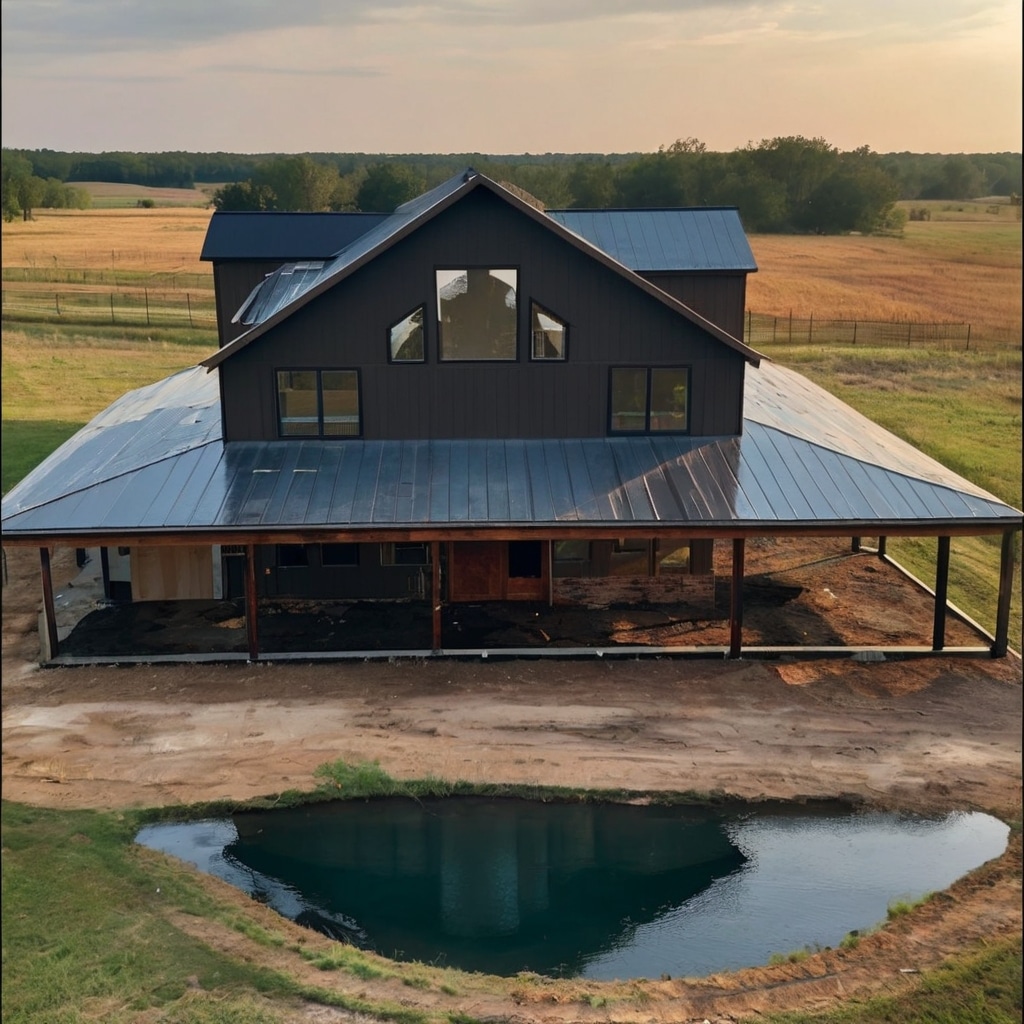
Even when structures are storm-resistant, post-storm recovery is a major concern for homeowners. So the question isn’t just are barndominiums safe in severe weather—it’s also: how fast can they bounce back afterward?
The answer is encouraging. Barndominiums are easier to repair than traditional homes due to their modular and metal-based design. Most external damage—like dented siding or damaged roof panels—can be fixed by simply replacing individual steel components. There’s no need to tear apart an entire section of the structure.
Here’s how recovery typically compares:
| Component Affected | Traditional Home Repair | Barndominium Repair |
|---|---|---|
| Roof (shingles) | Full re-roof may be required | Replace individual metal panels |
| Siding (vinyl/wood) | Section removal, repainting | Swap metal panels, minimal tools |
| Interior Drywall | Mold risk, structural damage | Drywall replaceable, structure intact |
| Foundation | Risk of shifting or cracking | Anchored slab less likely to move |
If you’re still asking, are barndominiums safe in severe weather, consider how their materials protect not just during—but after—storms. Their resistance to moisture also reduces the risk of mold growth, which is a major issue in flooded wood homes.
Cost Comparisons With Traditional Homes After Disasters
Another benefit that answers are barndominiums safe in severe weather is reduced recovery cost. Because steel components can often be reused or replaced piece-by-piece, overall repair expenses are typically lower.
In disaster-prone zones, this translates to major long-term savings. You’re not just building for protection—you’re building for resilience. Insurers know this too: many providers now recognize metal homes as lower risk, which can mean lower premiums.
A barndo’s simplicity is a hidden advantage: fewer materials, fewer points of failure, and quicker turnaround times for post-disaster restoration. This can save thousands in contractor labor and reconstruction costs.
Want to keep recovery costs even lower? Discover great ideas like 25 Small Barndominium Ideas on a Budget to implement storm-smart upgrades affordably from day one.
In short, are barndominiums safe in severe weather, and do they make sense financially in the aftermath? Yes—and their design gives you an edge before, during, and after disaster strikes.
Why Barndominiums Are a Smart Long-Term Investment
Comparing Long-Term Safety and Insurance Benefits
When evaluating a home’s value, most people focus on square footage, aesthetics, or resale price. But in storm-prone regions, one factor matters more than most: resilience. That’s why the question are barndominiums safe in severe weather is not just about survival—it’s about long-term value.
Barndominiums offer built-in structural advantages that reduce damage risks from hurricanes, tornadoes, floods, and hail. As a result, these homes often experience fewer costly repairs and longer lifespans. Many insurance providers have recognized this, offering discounted premiums for metal-framed structures built to code.
Let’s compare the long-term durability:
| Factor | Traditional Home | Barndominium |
|---|---|---|
| Weather Resistance | Moderate (varies by material) | High (steel and reinforced design) |
| Insurance Risk Profile | Higher | Lower in storm-prone zones |
| Typical Maintenance Costs | Higher due to weather wear | Lower with metal exterior |
| Expected Lifespan | 40–60 years | 60+ years with proper care |
In addition to lower risk, steel homes also resist rot, termites, mold, and fire—further protecting your investment over time.
Choosing a Builder Who Understands Local Weather Demands
A big part of ensuring your barndo is truly storm-ready depends on your builder’s experience with local weather conditions. For example, homes built in Florida should include hurricane straps and wind-rated windows, while homes in the Midwest need tornado-safe anchoring and interior shelter space.
Working with a contractor who specializes in barndominiums and understands the local building codes ensures you’re not just meeting standards—you’re exceeding them. That’s when the true answer to are barndominiums safe in severe weather becomes a confident yes.
If you’re unsure where to begin or how to navigate those design decisions, Learn how Barndo Gallery helps homeowners build weather-smart barndominiums to explore expert advice and design-ready resources tailored for storm-smart living.
When built with future weather events in mind, a barndominium becomes not just a home, but an investment in peace of mind.
Thinking of building your dream home? Folow me in my facebook page
Frequently Asked Questions (FAQs) :
What is the downside of a barndominium?
While barndominiums offer excellent storm resistance and long-term durability, they do have a few downsides to consider:
Noise Levels: Metal roofs can amplify sounds from heavy rain or hail unless properly insulated.
Limited Appraisals: Some areas lack comparable properties, which can affect financing or resale.
Perception as “Non-Traditional”: Some HOAs or zoning boards may not be as accepting of metal home designs.
That said, none of these are dealbreakers—and most can be addressed through smart design or builder experience.
How safe are barndominiums in storms?
Barndominiums are among the safest residential options for storm-prone areas. Their steel framing, wind-rated roofing, and minimal overhangs make them resistant to high winds, hail, and heavy rain.
With the addition of storm shelters, hurricane straps, and secure anchoring systems, they often outperform traditional wood-frame homes in durability and recovery after storms.
What are the downfalls of a barndominium?
The most common downfalls cited include:
Financing Challenges due to appraisal or lender unfamiliarity
Condensation Risks in humid areas without proper insulation
Interior Finish Limitations depending on budget or structure size
However, these issues don’t affect how safe barndominiums are in severe weather—they mostly relate to comfort, financing, or aesthetics.
Why do banks not like barndominiums?
Banks may hesitate to finance barndominiums because:
They’re often considered non-conventional homes
Appraisers struggle to find local comps
The home may include mixed-use space (e.g., a shop + living area)
Importantly, this has nothing to do with safety. In fact, many insurers and engineers recognize barndominiums as more resilient in extreme weather than standard homes.
Conclusion: Built to Withstand, Designed to Last
If you’ve been wondering, are barndominiums safe in severe weather, the evidence is clear—they are one of the most resilient and dependable home types available today. Built with galvanized steel framing, wind-rated roofing, and reinforced siding, barndominiums are structurally designed to handle harsh conditions including hurricanes, tornadoes, hailstorms, and flooding.
Not only do they resist impact and wind uplift, but they also recover quickly from storms thanks to their modular metal design. Whether you’re dealing with extreme rainfall or a Category 4 hurricane, barndominiums can be reinforced with storm shelters, anchored foundations, and weatherproof coatings to create a home that’s both safe and cost-effective.
Still asking, are barndominiums safe in severe weather events like flash floods or high winds? Yes—especially when built according to regional codes and with climate-specific upgrades. Unlike traditional wood-framed homes, barndominiums don’t warp, rot, or burn easily. This gives them long-term advantages in both safety and durability.
When planned properly, these homes become investments in resilience. With customizable layouts and the ability to add features like impact-rated windows or elevated foundations, you’re not just buying a home—you’re building peace of mind.
Want to get started? Check out Browse 8 stunning farmhouse designs for every lifestyle to find weather-smart inspiration, or Explore 25 budget-friendly small barndominium ideas for affordable upgrade ideas.